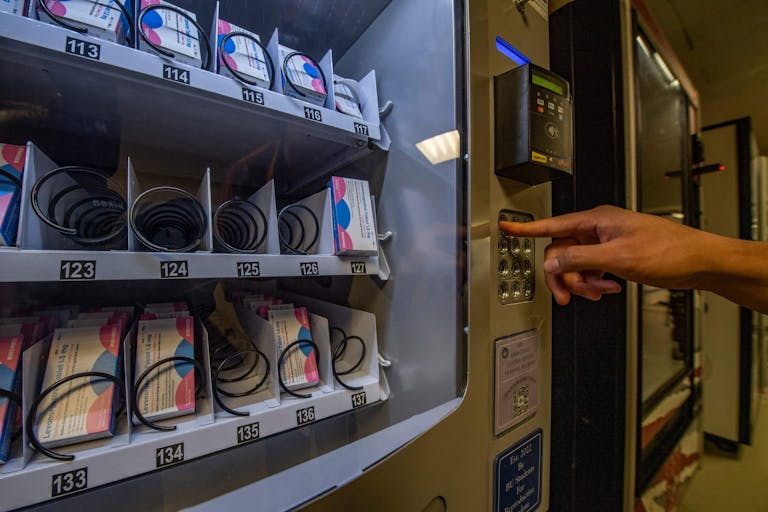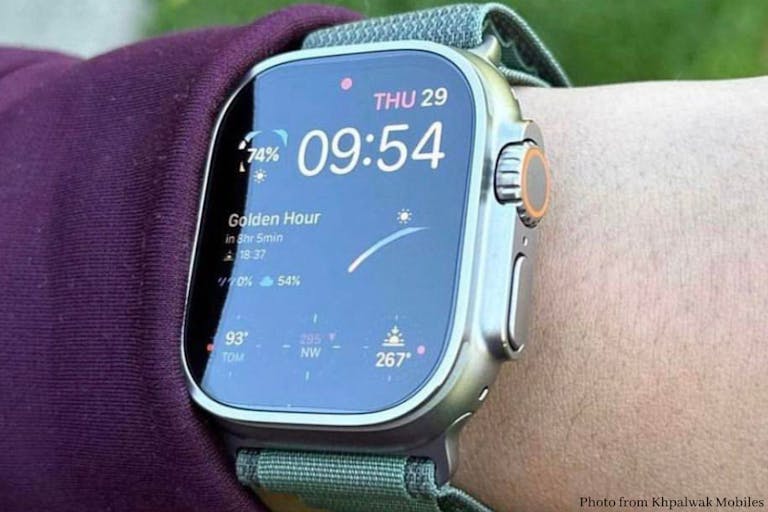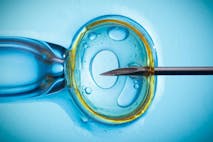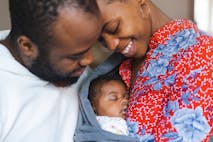
NY college partially subsidizing emergency contraception in vending machines
Bridget Sielicki
·
Analysis·By Anne Marie Williams, RN, BSN
The strengths and weaknesses of Apple’s new ovulation tracker
Users of Apple Watch Series 8 or Apple Watch Ultra have access to a new fertility-related feature intended to help women identify when they’ve ovulated. Apple Vice President of Health Dr. Sumbul Desai noted that users could utilize their personal fertility data to help them get pregnant, commenting, “If you’re trying to conceive, knowing if and when you ovulated can inform your family planning with your health care provider.”
Yet Wired reported that “some medical experts… worry that fertility predictions provided by tech companies could be misused, resulting in unwanted pregnancies by people who don’t understand how complicated fertility can be.”
How reasonable are fears of unplanned pregnancies in watch wearers? Is there any truth to the idea of women knowing “just enough [about their fertility] to be dangerous,” as the saying goes?
Watch Series 8 users can now receive alerts for cycle deviations, like when “your logged cycle history from the previous six months shows a pattern of irregular periods, infrequent periods, prolonged periods, or persistent spotting.” Users can even export their fertility data to a PDF to share with their health care provider, though they’ll likely need to find a health care provider trained in restorative reproductive medicine, an approach that treats underlying issues in order to “restore women’s healthy cycles, and to protect and enhance their natural fertility,” if they don’t simply want to receive a recommendation for hormonal birth control to “treat” common reproductive issues.
Watch users can also receive notifications when they’ve presumably ovulated. In order to conceive, you need good-quality cervical mucus, sperm, and a mature egg. Ovulation is when a mature egg is released from one of the ovaries. Cervical mucus helps the sperm make it all the way up to the fallopian tube, where it can live for up to five days. If sperm is present at the time the mature egg is released, at ovulation, conception can occur.
Just before ovulation, the woman’s basal body temperature (BBT), or her body temperature at rest, dips slightly. After ovulation, her BBT rises 0.4-0.5 degrees, and remains elevated until just before her next period. By tracking BBT, you can presumptively confirm that ovulation has occurred, though performing an ultrasound series and blood draw is the only way to confirm ovulation for certain.
In order to measure BBT, the Apple watch contains two sensors that measure wrist temperature every five seconds throughout the night, similarly to the Oura ring, Ava bracelet, or Tempdrop upper armband. Natural Cycles, the first app to receive FDA clearance as a digital contraceptive, paired with the Oura Ring for BBT measurements, and is considering pairing with the Apple watch. Apple noted that users must wear the watch for two cycles in order to start receiving ovulation confirmations.
According to the Apple support website, in addition to presumptive confirmation that ovulation has occurred, marking a return to infertility within 24-48 hours after ovulation, Health app or Cycle Tracking app users can also see at a glance their predicted six-day fertility window and predicted next period date.
According to the Apple support website, the period prediction feature is based on “a traditional calendar method,” also known as the rhythm method, a precursor to modern evidence-based fertility awareness methods, which worked best for women with regular cycles. The rhythm method had a significantly higher failure rate than hormonal birth control — 24% incidence of unplanned pregnancies with typical use — and until 2019, the Centers for Disease Control and Prevention (CDC)’s website mistakenly conflated every fertility awareness method’s effectiveness with the rhythm method’s effectiveness. In 2019, the CDC updated the statistic to reflect a range (2-23%) of pregnancy prevention effectiveness, depending on the method.
READ: Jennifer Aniston and the harsh reality of finite fertility
Article continues below
Dear Reader,
In 2026, Live Action is heading straight where the battle is fiercest: college campuses.
We have a bold initiative to establish 100 Live Action campus chapters within the next year, and your partnership will make it a success!
Your support today will help train and equip young leaders, bring Live Action’s educational content into academic environments, host on-campus events and debates, and empower students to challenge the pro-abortion status quo with truth and compassion.
Invest in pro-life grassroots outreach and cultural formation with your DOUBLED year-end gift!
With the addition of the ovulation tracker via BBT readings, the app’s period and fertile window predictors should logically become more reliable, since the readings reflect the woman’s own biomarkers of fertility and not just a calendar calculation.
Theoretically, a woman could use her BBT readings and calendar data to predict when she’d be fertile, and abstain or use barrier methods during her predicted fertile time. It’s also true, as critics note, that stress, illness, alcohol, and more can impact temperature readings. This is why evidence-based fertility awareness methods use a crosscheck of cervical mucus observations or urinary metabolite observations, which Apple’s fertility features don’t include.
Apple’s own website reads: “Cycle Tracking should not be used as a form of birth control. Data from Cycle Tracking should not be used to diagnose a health condition. Ovulation estimates are estimates only, and do not guarantee that ovulation has occurred.”
Modern evidence-based fertility awareness methods can, in fact, be used to reliably avoid pregnancy. At the same time, the apps themselves, and their proprietary algorithms, are not necessarily fool-proof.
For starters, the relative recency of fem-tech app development and uptake means that research to date has largely included small, even very small, sample sizes. In 2018, Rebecca Simmons, a University of Utah researcher who studied the Clue Birth Control app, told Slate, “[The apps] are taking something that has legitimate scientific backing but applying it in a way that isn’t necessarily scientifically sound, and without providing guidance on how to navigate it.”
As this Natural Womanhood article pointed out, “[S]ince each algorithm is designed with a single specific purpose in mind, aiming to optimize certain metrics or reduce specific inaccuracies, no one model can optimize every fertility-related goal. That means one algorithm [for one app] can’t simultaneously optimize for avoiding pregnancy and achieving pregnancy and health monitoring.”
In contrast, modern evidence-based fertility awareness methods, which rely on data from the woman’s own biomarkers, like cervical mucus, cervical position, and qualitative or even quantitative urinary hormone metabolite measurements, can be used to avoid or achieve pregnancy.
Risk of unplanned pregnancy is logically highest in women using technological versions of the rhythm method, like the Clue Birth Control app, and for women who don’t know how to read their body’s own indicators of fertility and infertility. Instructors trained in modern evidence-based fertility awareness methods teach women how to identify when they are and are not fertile. But apps like Apple’s fertility features do not teach women this information.
For this reason, women who attempt to determine their fertility based on their Apple fertility data alone could potentially be at increased risk of unplanned pregnancy.
The answer is to increase women’s body literacy by providing more education, not less, about their fertility — preferably starting when they are young. Women deserve to know how their bodies work so that they can make informed decisions with their personal fertility data. Apple’s ovulation tracker is a step towards providing the average woman more information, but much more education is needed.

Live Action News is pro-life news and commentary from a pro-life perspective.
Contact editor@liveaction.org for questions, corrections, or if you are seeking permission to reprint any Live Action News content.
Guest Articles: To submit a guest article to Live Action News, email editor@liveaction.org with an attached Word document of 800-1000 words. Please also attach any photos relevant to your submission if applicable. If your submission is accepted for publication, you will be notified within three weeks. Guest articles are not compensated (see our Open License Agreement). Thank you for your interest in Live Action News!

Bridget Sielicki
·
Analysis
Cassy Cooke
·
Analysis
Nancy Flanders
·
International
Angeline Tan
·
Pop Culture
Cassy Cooke
·
International
Cassy Cooke
·
Human Interest
Anne Marie Williams, RN, BSN
·
Issues
Anne Marie Williams, RN, BSN
·
Analysis
Anne Marie Williams, RN, BSN
·
Analysis
Anne Marie Williams, RN, BSN
·
Issues
Anne Marie Williams, RN, BSN
·